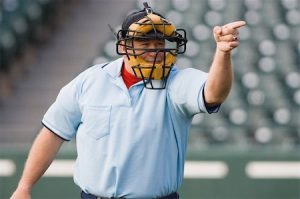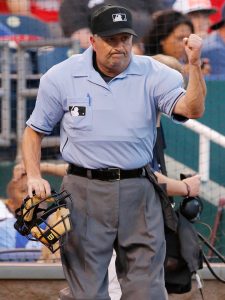The Art of Baseball Umpire Hand Signals: Baseball is often referred to as America’s pastime, a sport rich with tradition, strategy, and nuance. Among the most intricate aspects of the game is the role of the umpire, who must make split-second decisions and communicate them clearly to players, coaches, and fans. A critical part of this communication is the use of hand signals. These signals ensure that everyone on the field and in the stands understands the umpire’s calls, helping to maintain the flow and integrity of the game.

The Importance of Umpire Hand Signals
Hand signals in baseball are vital for several reasons. They provide a clear and immediate way to communicate decisions, especially in noisy stadiums where verbal calls might not be heard. They also standardize calls across different leagues and levels of play, ensuring consistency and fairness. Furthermore, hand signals can convey a wealth of information quickly, which is crucial in a fast-paced sport like baseball.
Basic Hand Signals Safe
One of the most recognizable umpire signals is the “safe” call. The umpire extends both arms straight out to the sides, parallel to the ground, with palms facing down. This signal baseball umpire hand signals indicates that the runner has reached the base without being tagged or thrown out. It’s a moment of relief for the offensive team and a crucial call in tight game situations.
The “out” call is another fundamental signal. The umpire clenches their fist and raises it above their head. This signal can accompany various scenarios: a batter striking out, a runner being tagged out, or a fielder catching a fly ball. The “out” signal is definitive and leaves no room for ambiguity, crucial for maintaining the game’s pace.
The strike signal is essential for managing the pitcher-batter duel. When calling a strike, the umpire will generally extend their right arm to the side and slightly upwards, often with a clenched fist. This motion is sharp and quick, mirroring the decisive nature of the call. On the third strike, some umpires add a vocal exclamation or additional flair to emphasize the batter’s out.
The signal for a ball is subtle compared to others. The umpire simply baseball umpire hand signals makes no hand motion, which might seem counterintuitive. This non-signal signal indicates that the pitch did not fall within the strike zone and wasn’t swung at by the batter. By not making a dramatic gesture, the umpire maintains focus and avoids unnecessary confusion.
For a foul ball, the umpire raises both arms above their head and then extends them outward. This signal is crucial as it indicates that the ball is out of play, and runners must return to their bases. It also ensures that the batter is not charged with a strike if they have less than two strikes already.
Advanced Hand Signals Infield Fly Rule
The infield fly rule is invoked to prevent the defense from making an easy double or triple play on a pop-up. The umpire signals this by raising one arm straight up and calling out, “Infield fly, the batter is out.” This signal ensures that runners are aware they do not need to advance, preventing a deceptive play by the defense.
The Art of Baseball Umpire Hand Signals

Time Out
When a time-out is called, the umpire signals by extending both arms straight out in front of them, then bringing them together overhead to form a “T.” This signal baseball umpire hand signals pauses the game, allowing for substitutions, conferences, or other interruptions.
A fair ball is indicated by the umpire pointing into the field of play. This straightforward signal ensures that all players know the ball is live and in play, which is crucial for base running and defensive actions.
For a home run, the umpire typically raises their arm and makes a circular motion with their index finger. This signal is often met with great excitement from the crowd and signals that the batter and any runners can circle the bases and score.
Communication and Consistency
Umpire hand signals are not just for players and coaches but also for fans and broadcasters. Clear and consistent signaling helps everyone understand the game’s proceedings, fostering a better viewing experience. Training for umpires places a significant emphasis on mastering these signals to ensure uniformity across all levels of play.
The role of an umpire in baseball is complex, demanding not only a deep understanding of the game’s rules but alsobaseball umpire hand signals the ability to communicate decisions swiftly and clearly through hand signals. These signals are a fundamental part of the baseball umpire hand signals game’s fabric, ensuring clarity, fairness, and continuity. Whether calling a runner safe, signaling a strike, or declaring a home run, the umpire’s hand signals are essential to the rhythm and integrity of baseball.